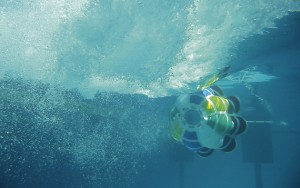Drogues and sea anchors: we test a Jordan Series drogue and a ParaAnchor
Drogues and sea anchors are designed to slow a boat or allow it to hold station in extreme weather conditions. They can prevent a possible capsize, roll or broach by keeping the bow or stern facing the weather. Debates about the pros and cons are rife among cruisers. In Skip Novak’s Storm Sailing Series he reveals that he isn’t in favour of streaming warps, let alone using a drogue or sea anchor. Yet there are numerous testimonials from long-distance sailors who place their faith in these devices. Intrigued to see how practical this equipment is to use, I joined Rubicon 3, a sail training and exploration company, during a heavy weather sail training weekend. I was particularly keen to see how easy it is to deploy and retrieve a drogue or sea anchor, and compare their benefits. We sailed from Portsmouth aboard the 60ft Hummingbird, an expedition yacht built for the original Clipper Race in 1996. We needed to sail 15nm offshore into the English Channel to reach a depth of 20m to set the sea anchor, which has a diameter of 26ft, and find enough sea room to retrieve the 110m drogue. Once these contraptions are deployed, the yacht’s ability to manoeuvre is limited. Bruce Jacobs, together with Rachael Sprot, founded Rubicon 3 to offer a unique crossover of adventure sailing and sail training. They had requested we muster early in the morning so we could check and load the equipment. They ran through the theories of using drag devices and how we would deploy and recover them. “The main thing you have to look for when in heavy weather is breaking seas,” said Jacobs. “The boat can handle breaking waves if they are in the right orientation – 20° each side of the bow and similarly to the stern. The thing you don’t want to do is end up sideways to the sea.” Choices in heavy weather Yachtsmen have the choice of battening down and riding out extreme weather by heaving-to, forereaching, or lying ahull. But these techniques will not prevent capsize if a yacht is hit by a breaking wave. There are three choices of purpose-made tackle to help keep a yacht stable in big seas: a single drogue towed off the stern to stop it surfing, a series drogue (a series of multiple miniature drag devices or cones on one line) or a sea anchor. The latter two are bulky, expensive items to ship, but are proven to keep a yacht bow or stern to the waves. Jacobs explained that it is easier to keep a yacht stern on to waves as it sits better to the wind and is stable running downwind under bare poles. The counter argument is that the bow has been designed to point into waves, whereas the stern can poop and take waves into the companionway. Both the theories and test accounts of using series drogue and sea anchors are wide ranging. “Most importantly, if you can keep a fit and … Continue reading Drogues and sea anchors: we test a Jordan Series drogue and a ParaAnchor
